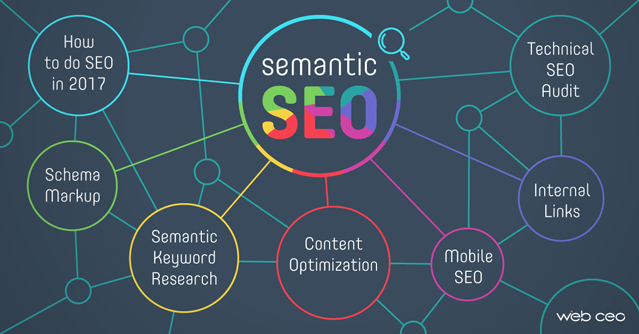Search engines have come a long way from the early days of simple keyword matching. Today, Google and other search engines are much smarter, aiming to understand search intent and the meaning behind content rather than just scanning for repeated keywords. This shift has given rise to a powerful concept in digital marketing called Semantic SEO.
In this article, we’ll explain what semantic SEO is, why it matters, and how you can use it to improve your rankings and visibility online.
What is Semantic SEO?
Semantic SEO is the process of optimizing your content so search engines can fully understand the meaning, context, and intent behind it. Instead of focusing only on exact-match keywords, semantic SEO emphasizes creating content that answers related questions, covers a topic in-depth, and connects with user intent.
The word “semantic” comes from linguistics, meaning “relating to meaning.” Applied to SEO, it’s all about ensuring your content communicates meaning clearly to both search engines and users.
For example:
- Old SEO: Writing an article stuffed with the keyword “best laptops 2025.”
- Semantic SEO: Writing an article that not only includes “best laptops 2025” but also covers related queries like “laptop buying guide,” “laptop features to consider,” and “budget vs premium laptops.”
Why is Semantic SEO Important?
Search engines have evolved through major algorithm updates like Google Hummingbird, RankBrain, and BERT. These updates focus on natural language processing (NLP) and semantic search, meaning Google can now:
- Understand synonyms and related terms.
- Recognize user intent (informational, transactional, navigational).
- Evaluate topic authority instead of just keyword density.
By applying semantic SEO, you can:
- Rank for more keywords – Covering a topic deeply allows your page to appear for multiple related queries.
- Improve user experience – Visitors find thorough, helpful content that answers all their questions.
- Build topical authority – Google starts seeing your website as an expert in your niche.
- Increase engagement – Better content leads to higher time on page and lower bounce rates.
Key Elements of Semantic SEO
Here are the most important aspects to focus on when applying semantic SEO:
1. Topic Clusters and Pillar Pages
- Create a central pillar page that covers a broad topic.
- Support it with cluster pages targeting specific subtopics.
- Interlink them to show search engines the relationship between pages.
2. Answering User Intent
- Identify what users actually want to achieve with a query (learn, buy, compare).
- Write content that directly satisfies that need.
3. Using Related Keywords and Entities
- Include synonyms, related terms, and entities (people, places, concepts) naturally.
- Tools like Google’s “People Also Ask” or SEMrush Topic Research can help find them.
4. Structured Data (Schema Markup)
- Add schema to your content so search engines better understand context.
- This can also improve visibility with rich snippets (FAQ, reviews, ratings).
5. In-depth Content
- Instead of thin content, aim for comprehensive guides that cover all angles.
- Use headings, FAQs, and examples to expand depth.
Example of Semantic SEO in Action
Let’s say you’re writing about “Keto Diet.”
- Old SEO approach: Repeat “keto diet” multiple times.
- Semantic SEO approach: Cover related topics like:
- Benefits of keto diet
- Keto-friendly foods
- Keto diet side effects
- Keto meal plan for beginners
- Keto vs. other diets
By addressing these subtopics, your page is more likely to rank for dozens of related search queries, not just the main keyword.
Best Practices for Implementing Semantic SEO
- Do keyword research with intent in mind – Don’t just collect keywords, group them by intent and topic.
- Cover topics fully – Aim to create resources that answer not only the main query but also all related questions.
- Use internal linking wisely – Guide users (and search engines) to related articles.
- Leverage tools – Use platforms like Ahrefs, SEMrush, or SurferSEO to find semantic keywords and related terms.
- Focus on readability – Write for humans first. Search engines reward content that users actually enjoy reading.
Final Thoughts
Semantic SEO is no longer optional—it’s essential. As search engines become smarter, they reward websites that focus on meaningful, comprehensive, and user-focused content rather than keyword tricks.
By implementing semantic SEO strategies—like building topic clusters, answering intent, and using structured data—you’ll not only improve your search rankings but also provide real value to your audience.
In the end, semantic SEO bridges the gap between what users search for and how search engines understand content. If you want long-term growth in organic traffic, mastering semantic SEO should be a top priority.

